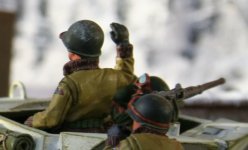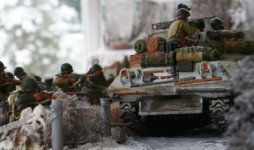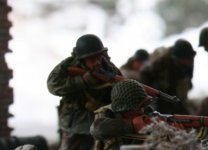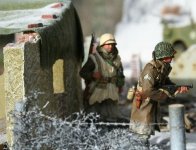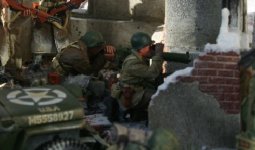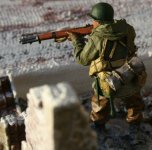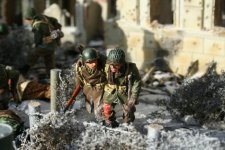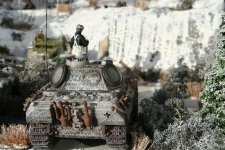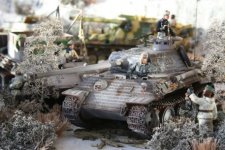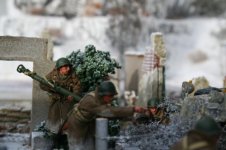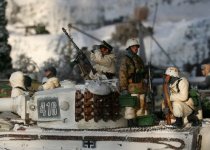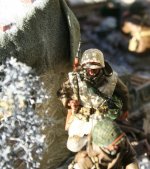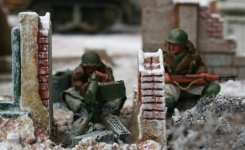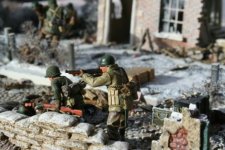panda1gen
Colonel
- Joined
- Jul 29, 2005
- Messages
- 8,125
Congressional Medal of Honor
ARTHUR O. BEYER
Rank and organization: Corporal, U.S. Army, Company C, 603d Tank Destroyer Battalion.
Place and date: Near Arloncourt, Belgium, 15 January 1945.
Entered service at: St. Ansgar, Iowa.
Born: 20 May 1909, Rock Township, Mitchell County, Iowa.
G.O. No.: 73, 30 August 1945.
Cpl. Beyer's platoon, in which he was a tank-destroyer gunner, was held up by antitank, machinegun, and rifle fire from enemy troops dug in along a ridge about 200 yards to the front.
Noting a machinegun position in this defense line, he fired upon it with his 76-mm. gun killing one man and silencing the weapon. He dismounted from his vehicle and, under direct enemy observation, crossed open ground to capture the two remaining members of the crew. Another machinegun, about 250 yards to the left, continued to fire on him. Through withering fire, he advanced on the position. Throwing a grenade into the emplacement, he killed one crewmember and again captured the two survivors. He was subjected to concentrated small-arms fire but, with great bravery, he worked his way a quarter mile along the ridge, attacking hostile soldiers in their foxholes with his carbine and grenades.
When he had completed his self-imposed mission against powerful German forces, he had destroyed two machinegun positions, killed eight of the enemy and captured 18 prisoners, including two bazooka teams.
Cpl. Beyer's intrepid action and unflinching determination to close with and destroy the enemy eliminated the German defense line and enabled his task force to gain its objective.
http://www.worldwariihistory.info/Medal-of-Honor/Bulge.html
ARTHUR O. BEYER
Rank and organization: Corporal, U.S. Army, Company C, 603d Tank Destroyer Battalion.
Place and date: Near Arloncourt, Belgium, 15 January 1945.
Entered service at: St. Ansgar, Iowa.
Born: 20 May 1909, Rock Township, Mitchell County, Iowa.
G.O. No.: 73, 30 August 1945.
Cpl. Beyer's platoon, in which he was a tank-destroyer gunner, was held up by antitank, machinegun, and rifle fire from enemy troops dug in along a ridge about 200 yards to the front.
Noting a machinegun position in this defense line, he fired upon it with his 76-mm. gun killing one man and silencing the weapon. He dismounted from his vehicle and, under direct enemy observation, crossed open ground to capture the two remaining members of the crew. Another machinegun, about 250 yards to the left, continued to fire on him. Through withering fire, he advanced on the position. Throwing a grenade into the emplacement, he killed one crewmember and again captured the two survivors. He was subjected to concentrated small-arms fire but, with great bravery, he worked his way a quarter mile along the ridge, attacking hostile soldiers in their foxholes with his carbine and grenades.
When he had completed his self-imposed mission against powerful German forces, he had destroyed two machinegun positions, killed eight of the enemy and captured 18 prisoners, including two bazooka teams.
Cpl. Beyer's intrepid action and unflinching determination to close with and destroy the enemy eliminated the German defense line and enabled his task force to gain its objective.
http://www.worldwariihistory.info/Medal-of-Honor/Bulge.html


